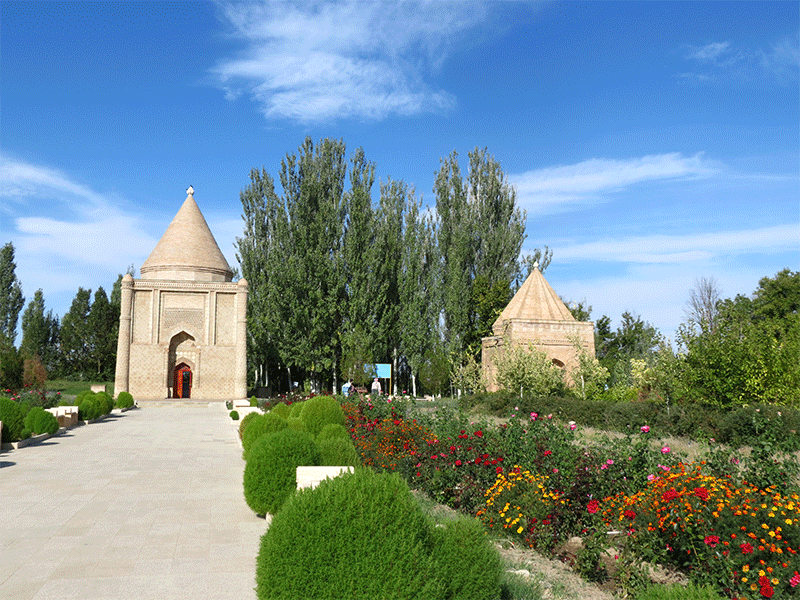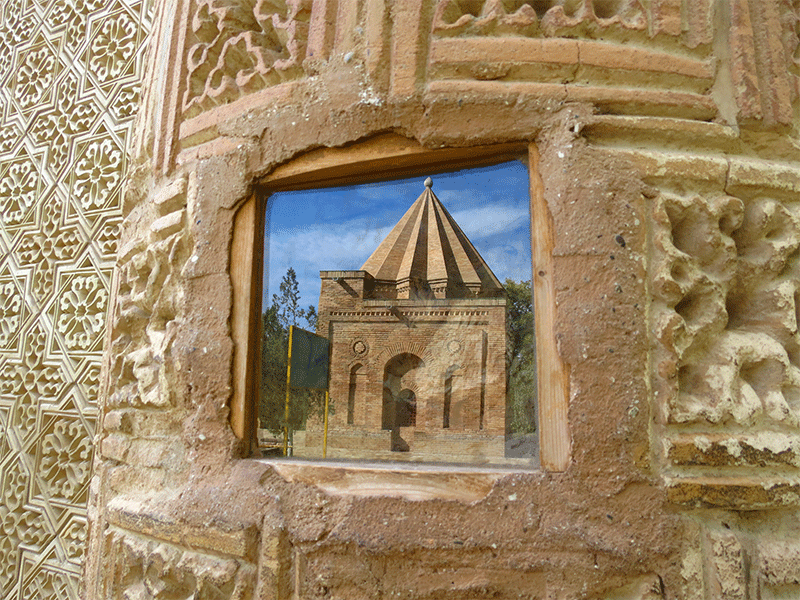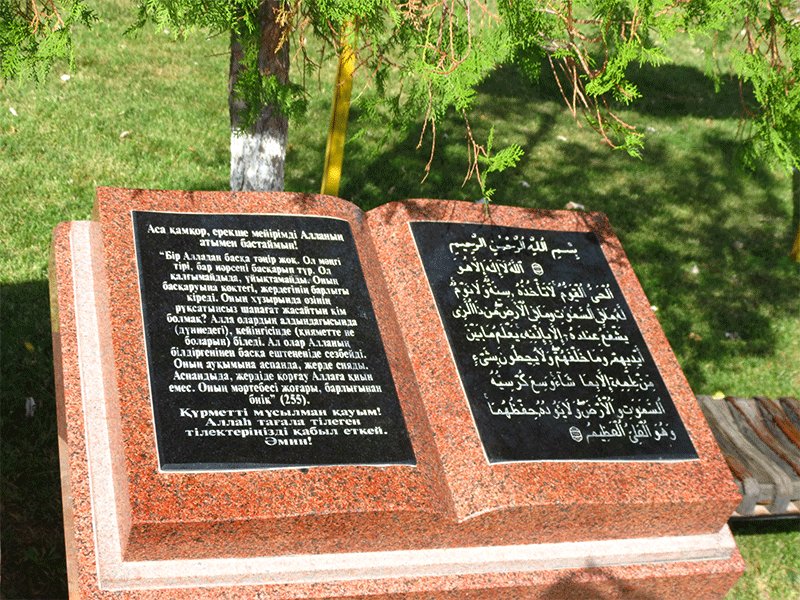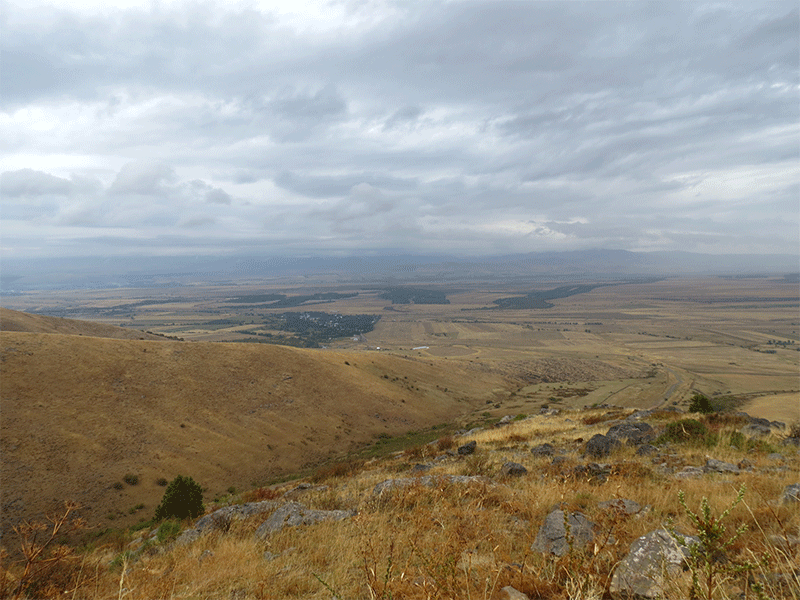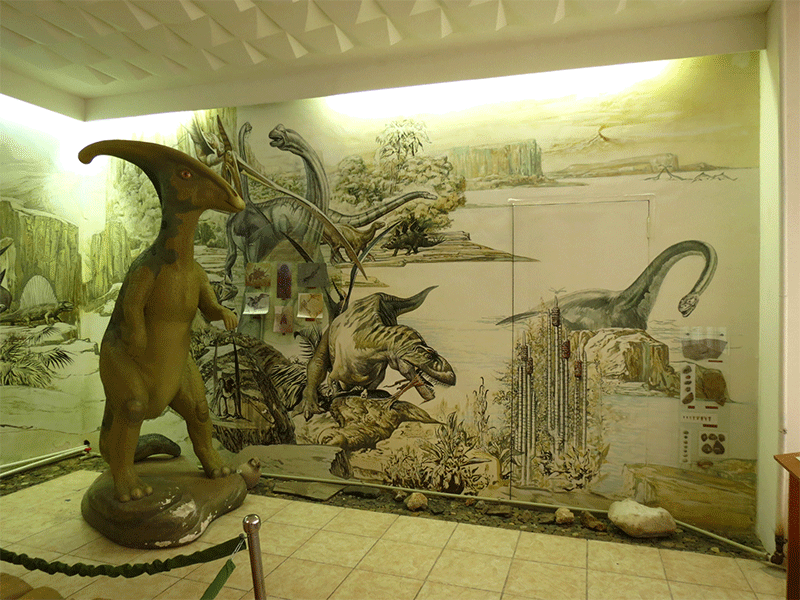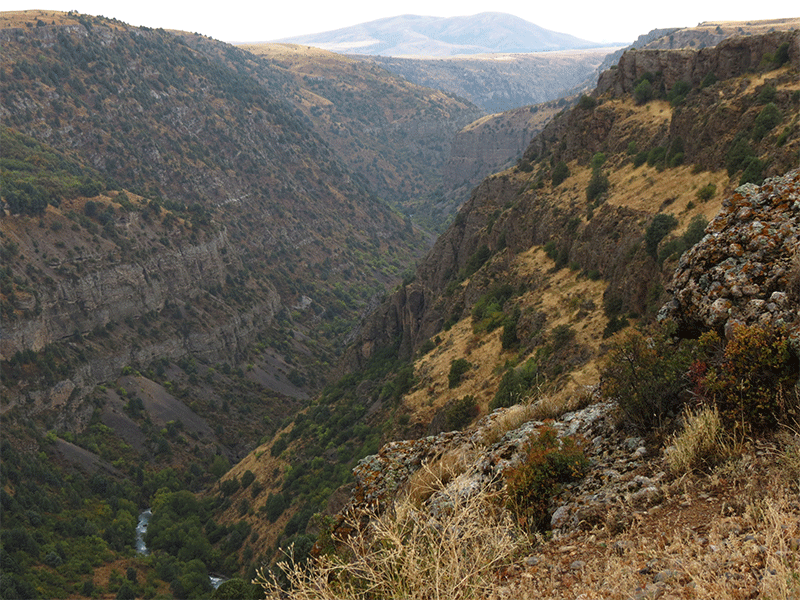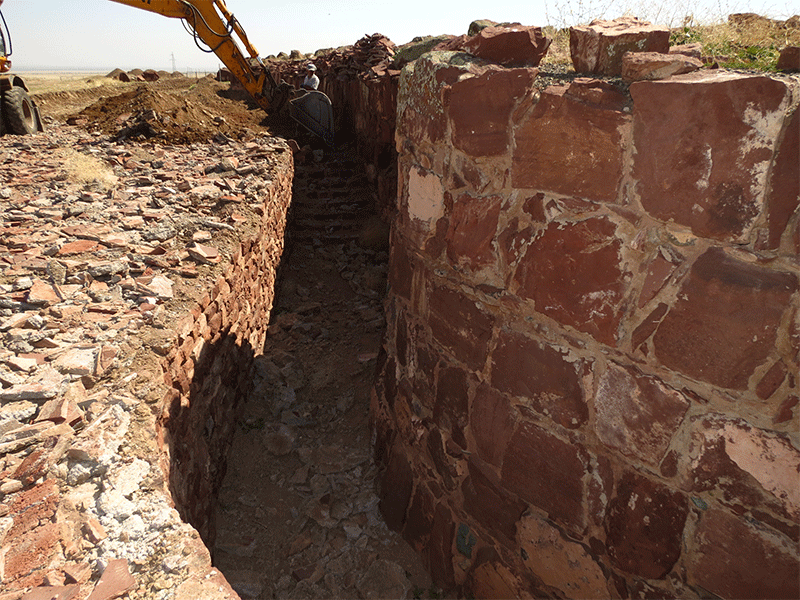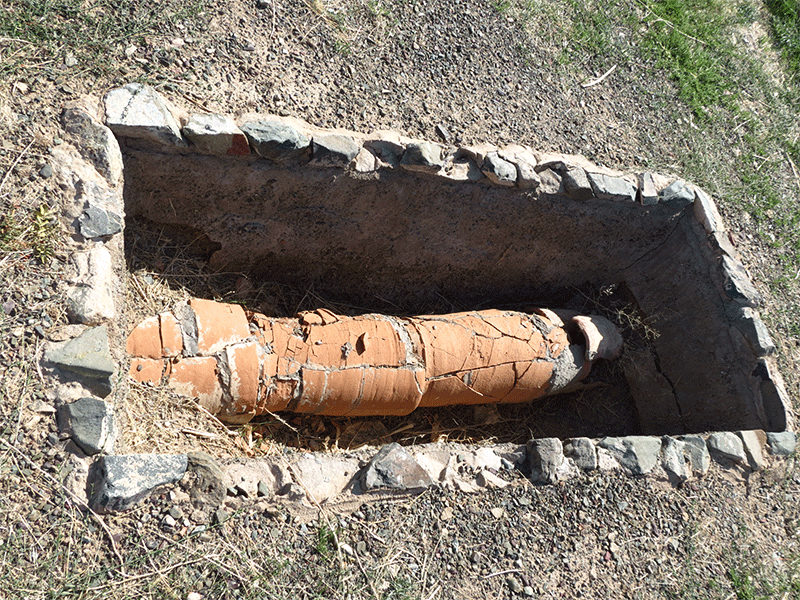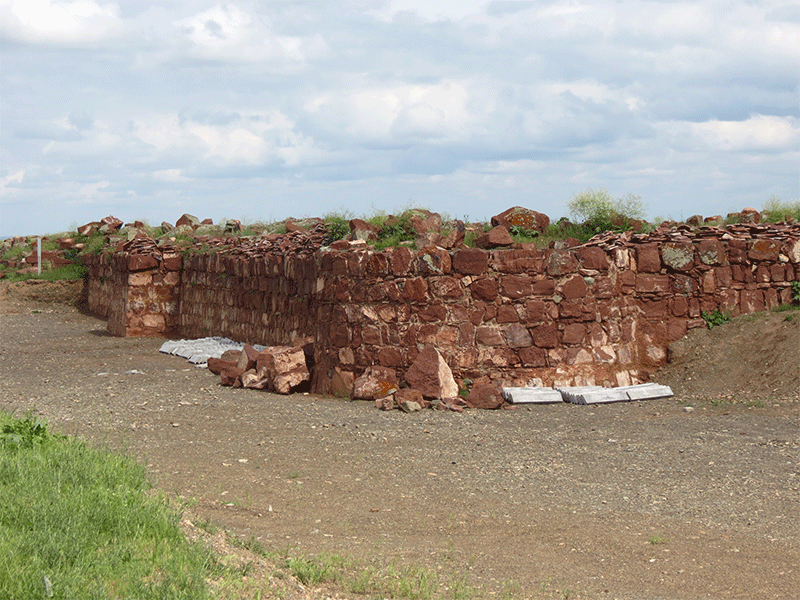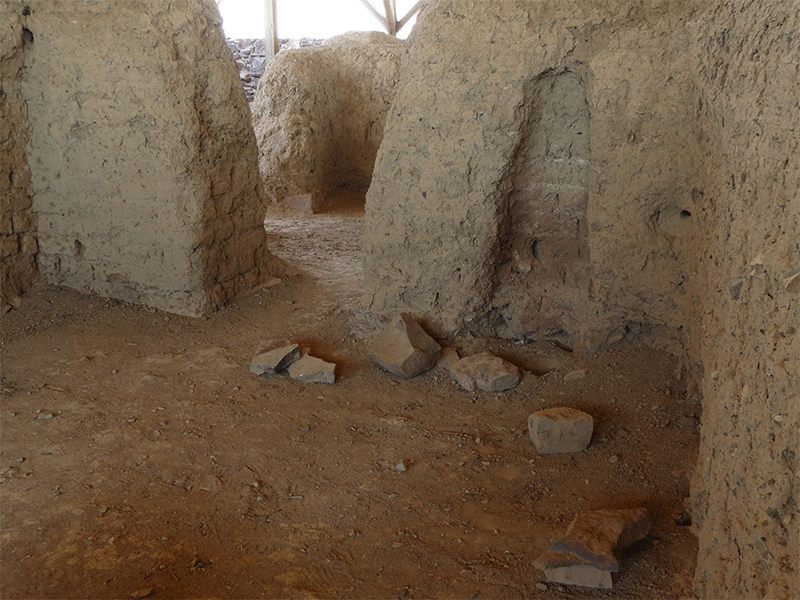TARAZ (ZHAMBYL)
In ancient times, Taraz town used to be a center of trade and a part of the Great Silk Road. The history of the settlement is more than 2 thousand years long. The town attracts tourists with its unique nature, mausoleums, traces of ancient citadels, small shops that belonged to merchants. All these is combined with modern infrastructure.
Consider look at the most iconic sights of Taraz:
Aisha Bibi mausoleum. This is an architectural monument of 11-12 centuries. It is located in the homonymous village the Zhambyl district. It is located about 18 kilometers away from Taraz. The mausoleum has an amazing story. It is dedicated to a girl named Aisha Bibi, with whom Karahan fell in love. He built a mausoleum with a cubic base in her honor. In the four corners of the building, there are majestic columns. For decoration, the craftsmen used the following elements: small niches, columns, arches, terracotta tiles for facing.
If you look closely at the patterns, you will see elements of traditional ornamental art of the most ancient Kazakhstani tribes. They include motifs going back to the art of the Saks tribes. As for the construction process of the mausoleum, there is no exact information. There is only a legend about the love between beautiful Aisha Bibi and her chosen one, which has more than 28 different versions. The most common legend says that Aisha Bibi was the daughter of the famous scientist and poet of the 11th century Hakim Suleimen Bakyrgani. When her father died, the girl was brought up at the court of Sheikh Aikozhi. Once, the warlike ruler of Taraz, Karahan Mohammed, set sights on the beauty. Despite a worthy proposal, the teacher of Aisha Bibi refused him to marry her. The girl decided to secretly move to Taraz, but died on the way. On the banks of the Asa River, she was bitten by a snake hidden in a headwear. The grieving ruler erected a magnificent mausoleum to honor his beloved girl. And he did it at that very place where the snake made its mortal bite. A fellow traveler of Aisha Bibi – Babaji Khatun – became the mausoleum keeper and after her death was buried 20 steps from her in the “Babaji Khatun mausoleum.
The mausoleum has always attracted scientists and researchers. A lot of scientific works have been dedicated to it. The pioneer was a Russian archaeologist Vasily Bartold, who visited the mausoleum in late 1893. Later, nake scientific expeditions were sent here. In 1897. V.A. Kalaur explored it. In the period of 1938-1939, representatives of the Institute of History and Culture of the KazFAN USSR and in 1953 of the Academy of Sciences of Kazakhstan visited it. In 1960, it was decided to build a durable glass cap to protect the monument. It has been used for both educational and tourism purposes. At the beginning of the 21st century, the mausoleum was restored thanks to efforts of an architect Nishan Rameto. Moreover, a beautiful park appeared around the building. The mausoleum was even called a museum where the ornamental treasures of the architecture of Kazakhstan are concentrated.
Ancient settlement Akyr Tas. Such an unusual name is translated from the ancient Turkic language as follows: “akhur” – “place for feeding livestock”, “tas” – “stone”. There is a translation from the Kazakh language: “Akyr Tas” means “screaming stone”. In the local mountains, people used to mine building material, which later was used for constructing one of the most mysterious and majestic structures on the entire Silk Road – Akyrtas.
For the first time the settlement was mentioned in the diary of a Taoist monk Chan Chun, who made a trip to Akyrtas from China in the first half of the 13th century. His path ran through the city of Sairam to Samarkand to the camp of Genghis Khan. In his diary, the following notes was found: “On the road, a beautiful town of stone appeared in front of us. Surprisingly, it was red. Here we saw traces of an ancient military base. And in the western part we came across huge tomb mounds, which were located like stars in the Ursa constellation”.
At the behest of a regimental artist Znamensky in the middle of the 19th century, the settlement was actively studied. Engineer Lupport, researcher D. Ivanov, an employee of the Academy of Sciences of Kazakhstan G. Patsevich, as well as various journalists and archaeologists took part in the exploration. All these people sought to understand the secrets of Akyrtas. Scientists who conducted studied the ruins could not understand the aim of building such a gigantic construction.
They were struck by the object’s unusual shape and its interior. The main enter was located in the northern part. From it, one could get into the courtyard with two oval ponds (hauzi). Around them, remained the bases of 28 mighty columns. About a hundred rooms adjoined the colonnade. Researchers noted a very complex and thoughtful system of corridors that connected the rooms.
The external walls of the object were au to 5 meters thick. They were formed of dark red sandstone blocks. Each was up to one and a half meters long. A notable feature of the block tops was a trough-shaped hole. At the same time, there were oval-shaped protrusions below. Due to this design feature, the craftsmen could join the blocks as tightly and firmly to each other as possible.
Such a construction technique in the past has never been seen anywhere else. Therefore, Akyrtas should be considered to be a unique architectural phenomenon of 5-7 centuries AD. Its bold engineering idea fascinates modern professionals. Even today, joining huge stone blocks would be a extremely difficult. Indeed, giant building materials had to be constantly moved vertically and horizontally. Modern experts admire the courage of the craftsmen who created such a structure.
In addition to courage, builders should have tremendous experience and skills. Moreover, it is assumed that they had mechanisms capable of raising, lowering and moving superheavy blocks at their disposal. By the way, an interesting fact – they were even larger than those blocks that were used for building the famous pyramids in Egypt. For example, the area of Akyrtas is about 4 hectares, to compare – the base of Cheops pyramid is 5.3 hectares.
Even a large number of explorations of the settlement did not give answers to two exciting questions: when exactly the structure was built and what was the purpose of its construction? Some people consider Akyrtas to be a Brahmin temple, which served as a haven for wanderers. At the same time, ponds were used for ablution. Other scientists believe that the site is a Nestorian monastery. There are supporters of the version that Akyrtas is a resting place for tired merchants passing by. However, ancient sources from the 13th century stated that Akyrtas was a legend.
For a long time, Kazakhstani experts had been trying to solve the mystery of this grandiose structure. They were assisted by Belgian and French scientists. This large-scale work was headed by the most experienced academician K. Baipakov. Experts came to the conclusion that Akyrtas is a Muslim monument. It was built by order of Kutayba ibn Muslim in the 7th century AD or so. It was constructed as a defensive fortress from enemies’ attacks.
Calculations were made to draw up a detailed layout. 12 rooms were discovered that were connected by a long corridor. Moreover, all the premises had no entrance! They are closed, with only the eastern gate being connected with the corridor. This layout reminded scientists of an early feudal castle. It was built mainly of adobe bricks; the walls were constructed of blocks.
Another noteworthy fact is that there are no defensive constructions on the outside. The interior was equipped with a dome-shaped coating. Lighting was provided through hatches (each of the domes had them). The wall was up to 2 meters high. Experts who studied the site noted the masonry technique. Even bricks placed to the edge were used. When clearing the western wall, so-called “stone fur coats” were discovered. They were made of small stones, being no more than 10 centimeters thick. Thanks to this configuration, the outer wall was reliably protected from the weather. Although at that time such masonry “fur coats” are not found anywhere else.
Chimney niches capable of heating the whole complex were also discovered. Scientists saw a little ash on the floor in the hearths. They noted that the floor is slightly calcined. It has been suggested that heating was performed using hot coals only. At that time, it was a common method in the settlements of Central Asia. Moreoevr, the researchers found many clay fragments. They differed from each other in manufacturing technology.
Pots, mugs and vessels were actively used in the household. Among other interesting findings, we should mention four threads of glazed beads and a button made of jade. Researchers were struck by the fact that the craftsmen were able to build an ancient water sewer in Akyrtas! Clay was used as the material. Water was taken from a mountain clove.
And that’s not all. If you study the traces of the irrigation system around the settlement, you can come to the conclusion that people in those days were already involved in melon farming. The researchers did the following: they made a small pit on the foundation in the western part. During excavations at shallow depths, blocks were discovered being up to 50 centimeters hogh. In total there were three or four rows of powerful stone masonry.
During excavations, handled stones were also discovered. They were carefully prepared for building the walls. Surprisingly, no binding elements were found between the materials. In this case, the wall could be up to five meters thick. Researchers have calculated the total volume and weight of the blocks. The result is impressive! Their total weight is about 70 thousand tons, with the volume exceeding 26 thousand cubic meters. Several thousand stonecutter slaves were probably involved in processing such a huge number of stones.
Researchers found no more such structures in Central Asia. Neither the layout, nor the engineering system, nor the construction technology have analogues. Therefore, we can safely consider Akyrtas a unique monument of religion and building art.
Aksu Zhabagly canyon, a natural reserve, national park. Tourists will have a fascinating trip starting from Zhabagly village, then passing through the villages of Yeltay and Iirsu getting into the jager Aksu canyon. It is located at 1.6 kilometers above sea level. Descent along the path to the canyon to the river takes about 1 hour, depending on the weather conditions. Walking around the area, you will enjoy the unusual flora and landscape.
The Aksu River Canyon is one of the deepest on the Eurasian continent. Its depth can reach half a kilometer and the distance between the edges is about 1 thousand meters. The walls of this natural object are formed by conglomerates of sediments from an ancient lake. Within several ledges, there is a wild river. Its water is cold, as it results from the melting ice of the Talas and Ugam Alatau.
During the flood (in the beginning and in the middle of summer), the river gets an unusual turquoise shade. However, by August it becomes completely transparent and tasty. A tugai forest is located along the river. Here, birches, willows and poplars grow. You can go down to the river, using the pathsnaking along the southern ledges. Below, you can not only enthusiastically watch the exciting river, but relax in the cool tree shade as well.
This place offers wonderful views of the terraces located in the southern part of the canyon. You will see unusual trees and shrubs, including bird cherry Magale” and Zeravshan juniper. On the northern slopes of this wonderful natural object, Siversa apple trees grow. It has incredibly delicious fruits of striking in shapes. Behind the canyon, there is the southern part of the Chuuldak nature reserve.
The canyon is especially beautiful in spring. Here, you can see lots of interesting representatives of the flora. For example, here the original tulips species Greig and Kaufman grow. On the canyon you can see fields whole of proudly blooming eremurus. Everywhere there is a magnificent aroma of herbaceous plants, flowering bushes and juniper.
In the summer end, when the plants begin to dry out, they produce a powerful coniferous smell. And at the beginning of autumn, you can enjoy the amazing landscape, with the main zest being the contrast between golden plants and bright blue shadows in the depths of the canyon.
Birds of prey always soar above the canyon. At the edge of old stones, tourists can come across a blue stone thrush, chats and other birds. Indeed, this place is especially beautiful and the canyon opens from many different angles.
| Duration: | Duration:at least three days |
| Cost: | Cost:Negotiation upon the price can take place |
| Tour includes: | Tour includes:
|
| Payment: | Payment: should be made no later than a day before the trip. You can pay in cash or by bank transfer. In case you refuse the trip less than 24 hours prior to its start – 50% of the price will be deducted. |

